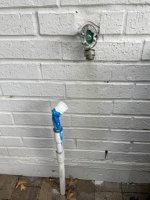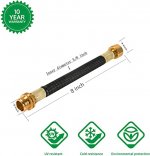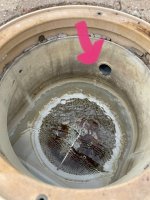Pictured is the set up of the pipe that was installed close to the outside water faucet so that I could use a splitter and be able to fill the pool directly when the water is low. Unfortunately it was poorly designed - the angle, height and placement have made it impossible to hook up a a connection other than using a regular hose that then sits on the ground.
I've had 2 different quotes - both in the $300 range to cut the PVC down a bit so there is enough space to 1) use a splitter with a 2) flexible short hose extension so that with these connected, the water would connect to this pipe.
As a DIYer, $300 seems like a lot and I feel like I should be able to tackle this. Is it a matter of simply using something to cut the PVC and using plumbers putty to connect a fitting to the shortened PVC pipe?

I've had 2 different quotes - both in the $300 range to cut the PVC down a bit so there is enough space to 1) use a splitter with a 2) flexible short hose extension so that with these connected, the water would connect to this pipe.
As a DIYer, $300 seems like a lot and I feel like I should be able to tackle this. Is it a matter of simply using something to cut the PVC and using plumbers putty to connect a fitting to the shortened PVC pipe?




